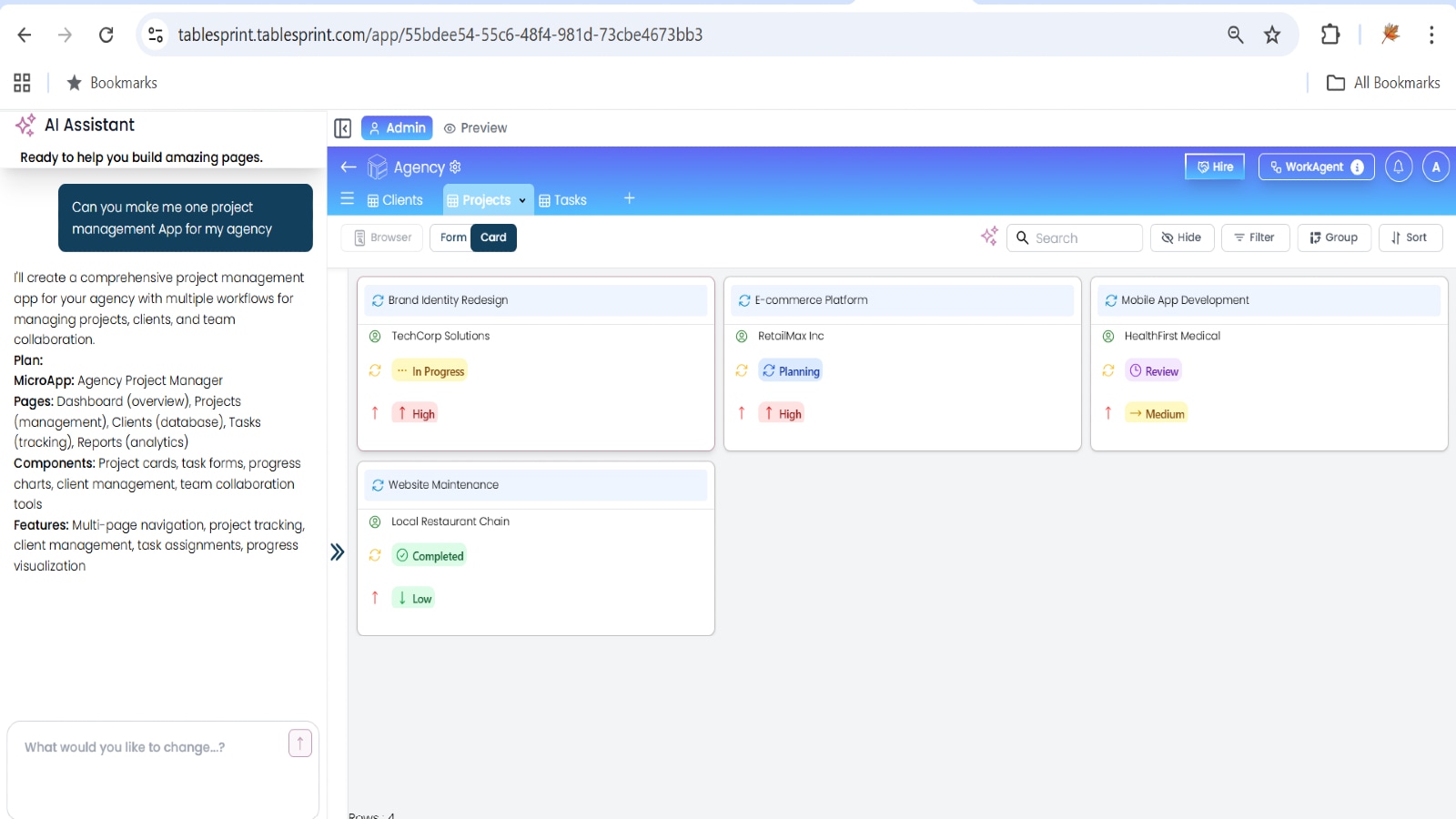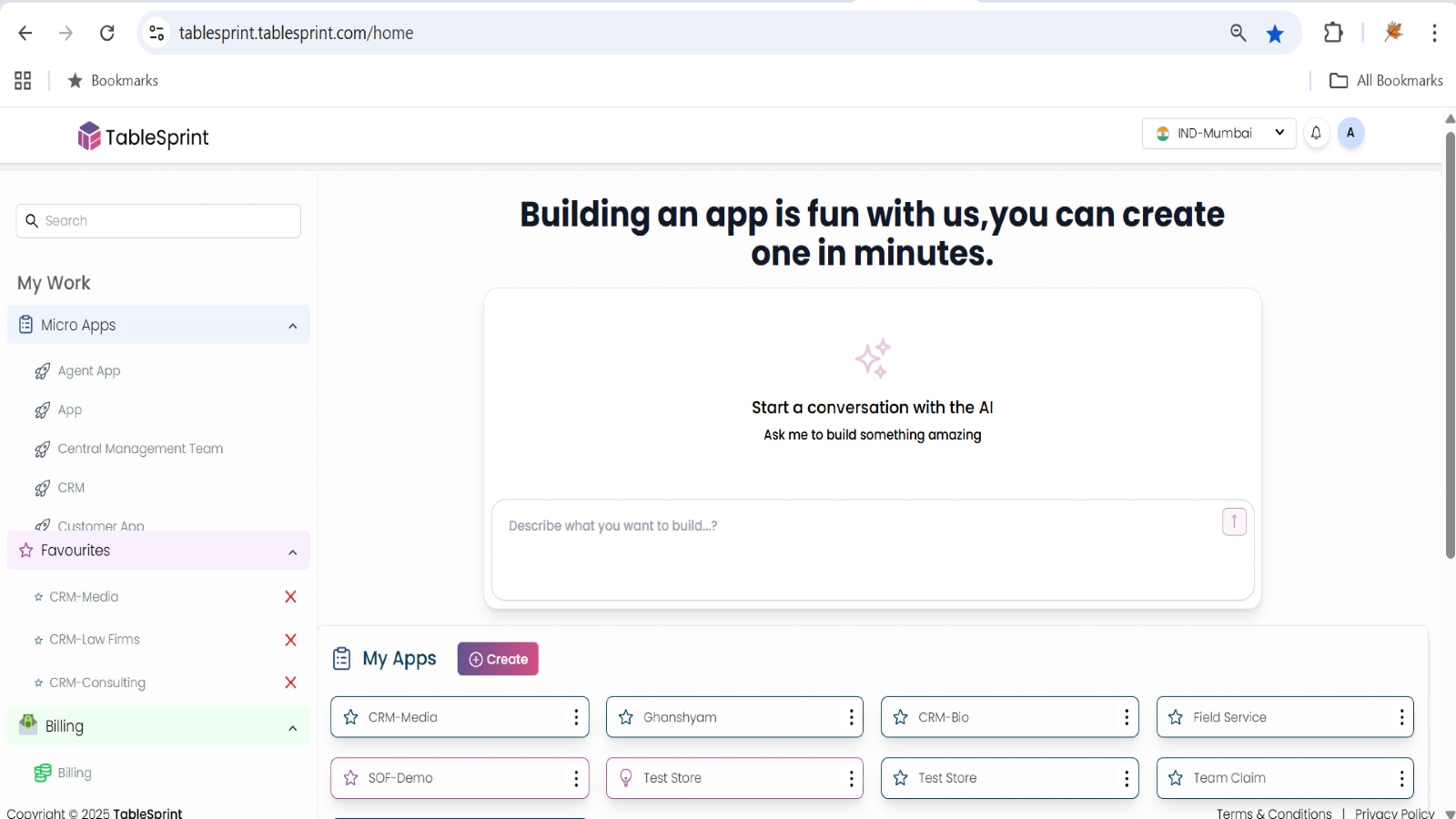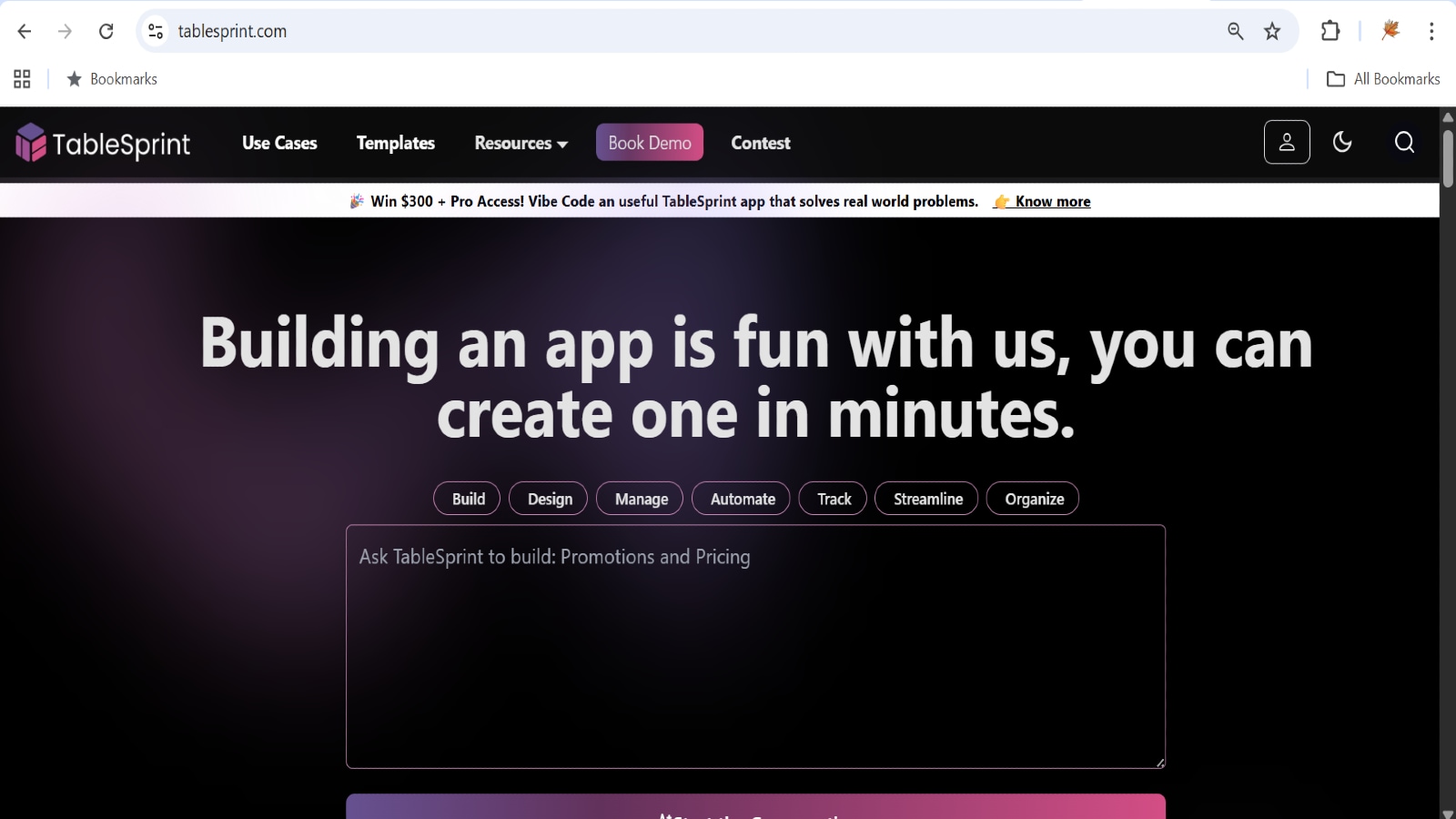Abhijeet Kumar describes TableSprint, the platform he helped develop, which enables anyone to create enterprise apps without programming or technical skills, as “an open-book exam”.
Kumar, Co-founder and CEO of TableSprint, is the latest startup founder to back the “vibe-coding” revolution that has swept the tech industry, fueled by the popularity of artificial intelligence tools and giving rise to a vibe-coding culture among code-writing amateurs.
“However, you don’t need to learn from all the books anymore. You just need to know how to apply the knowledge. For example, even my daughter built a library app for our housing society using TableSprint.
If you can write in English, you can code with vibe coding,” says Kumar during an interview with indianexpress.com.
‘Need for a lightweight tool’
Founded in 2024 by Kumar, Chirag Jadhav, and Naga Santosh Josula, TableSprint uses artificial intelligence to help businesses build production-grade enterprise apps and agents. It marks a departure from traditional practices, where creating functional apps and websites required professional developers who knew how to write code.
Platforms like Kumar’s are now opening doors for both non-coders and seasoned developers to vibe-coding and experiment with AI-powered code editors.
“Enterprises need software, and that software has to be built. The development process is often lengthy, taking up to six months with consultants, BRDs (Business Requirement Documents), and development cycles. However, there has always been a need for a lightweight tool, and AI has expedited that need by reducing design, prototyping, and development time for enterprises,” says Kumar.
Story continues below this ad
 Abhijeet Kumar, Co-founder and CEO of TableSprint.
Abhijeet Kumar, Co-founder and CEO of TableSprint.
Kumar’s motivation to start TableSprint stemmed from observing how banks and enterprises still rely heavily on legacy tools like Excel, email, and Google Drive for 60 to 70 per cent of their operations, where AI wasn’t even in the picture. With a background in tech and a strong belief that artificial intelligence could solve many of the problems businesses face, he launched his startup.
A graduate of IIT Bombay, Kumar began his career at Oracle and later moved into consulting, where he worked on enterprise inventory management and forecasting. Long before AI became a buzzword, between 2008 and 2010, Kumar was already working on time-series forecasting models, essentially acting as a “forecast tuner.”
A few years later, he founded RainCan, a micro-delivery platform for milk and groceries. “We scaled it to $100M+ ARR, handled about 3 lakh daily orders, and eventually sold it to BigBasket, where it became BigBasket Daily. I exited in late 2021,” he says.
From BRD to BDP
Kumar describes TableSprint as a complete solution for building chat and production-ready solutions, whether it’s for apps, websites, or AI agents. AI tools like TableSprint can be prompted with plain English to create a usable foundation for code.
Story continues below this ad
Using TableSprint, anyone can create a prototype of an app in just 10 minutes, down from the traditional six-month timeline. The process not only eliminates the need for coding expertise but also reduces reliance on large development teams. For example, as Kumar explained, a ticketing or dashboard app can be fully built in a week, while more complex enterprise applications that previously took months or even a year can now be developed in just two to three weeks.
Kumar calls this process Business Development Prompt (BDP), replacing the traditional BRD, a method used by technical teams to define the characteristics of a project, create a product prototype, and eventually take it to production.
“Something that used to take a year can now be done in two or three weeks. What took six months can be completed in a week. And something that used to take six weeks, you can now do in just 10 minutes. That’s the kind of speed we are talking about, depending on the type of project and the level of complexity you want to implement,” he explained.
Kumar said that for basic applications, only one person is needed to interact with the AI. For more complex apps, it may require a business stakeholder along with one developer to refine the prompts and conduct testing. This means there’s no longer a need for large development teams, which were previously required to build fully functional apps and websites.
Story continues below this ad
 Technologists say that vibe coding won’t replace all of the work of the engineer. (Image credit: TableSprint)
Technologists say that vibe coding won’t replace all of the work of the engineer. (Image credit: TableSprint)
Are software engineers still relevant?
As Kumar explains, the growing popularity of AI-powered assistants and editors, along with the rise of vibe-coding, reflects a significant shift. Given how quickly apps can now be conceived and developed, anyone can leverage this opportunity to build apps for resale and become solution providers themselves.
Kumar points out that many businesses still rely on white-labelling, where apps created by one company are offered to clients under another seller’s branding. However, with AI tools now available, there’s no longer a need to depend on Chinese white-labelled apps or limited pre-built templates. Businesses can create their own apps in-house, customise them, and white-label them for others, something that wasn’t possible before. TableSprint even offers a template store to help users get started quickly.
The use of artificial intelligence for coding has grown rapidly, with many companies, including some of the largest, now generating 20 to 30 per cent of their code using AI instead of human engineers. For Kumar, English is the new programming language. Does that mean it’s the end of software engineers as we know them? Probably not.
“The underlying languages are still the same: Java, Node, Postgres, they are not going anywhere. So yes, there’s still a lot of traditional development involved, but the speed of development has increased significantly. Now, business users can build things themselves. Prototyping is much faster, so of course, it’s going to have an impact. If I say it won’t, I wouldn’t be doing justice to the reality. It will have an impact. A lot of traditional development hours will go away”.
Story continues below this ad
“But at the same time, a lot of new opportunities will emerge. In the short term, we may not see a major shift, but in the long run, yes – there will be real change. For example, the current model where business teams explain requirements to developers- that part is going to be affected. But many new roles and possibilities will open up. That’s what always happens with any new technology.”
 Kumar and his entire team are based in Bengaluru and number around 15 to 16 people. (Image credit: TableSprint)
Kumar and his entire team are based in Bengaluru and number around 15 to 16 people. (Image credit: TableSprint)
Working with TableSprint
TableSprint primarily uses Anthropic’s Claude for 80 per cent of the heavy lifting, while models from OpenAI, Mistral, and others are used for specialised use cases.
Kumar explains that the primary cost is infrastructure- managing and scaling to handle millions of records. The other cost involves token usage from language models (LLMs), though this remains relatively low. Users can bring their own API keys for LLMs like OpenAI or Mistral, which helps reduce costs. Kumar’s TableSprint primarily charges for hosting, automations, and running fees, while passing most other costs, such as LLM usage, on to the user.
Building an app using Kumar’s TableSprint requires a subscription, similar to other no-code platforms, starting at around $19–$20 per month for a builder license. The primary costs are incurred through AI token usage : the more you interact with the AI, the more tokens are consumed. As Kumar explains, initial prototype costs are low, typically under $1.
Story continues below this ad
Edits and iterations increase token usage but remain affordable. Once the app is built, it incurs recurring hosting and infrastructure costs, typically ranging from $15 to $20 per month. These costs can vary depending on the app’s complexity; a simple website may cost around Rs 1,000/month, while more advanced apps like CRMs or inventory systems may have higher usage-based costs due to API calls and user activity.
Kumar counts large enterprises and SMBs among his clients, with notable names including Flipkart, Vedantu, and multiple global and Indian banks. The platform sees 6,000 to 7,000 daily users, including enterprise subscribers.
Kumar and his entire team are based in Bengaluru and number around 15 to 16 people. The startup has raised a pre-seed round and is open to raising more in the future.

